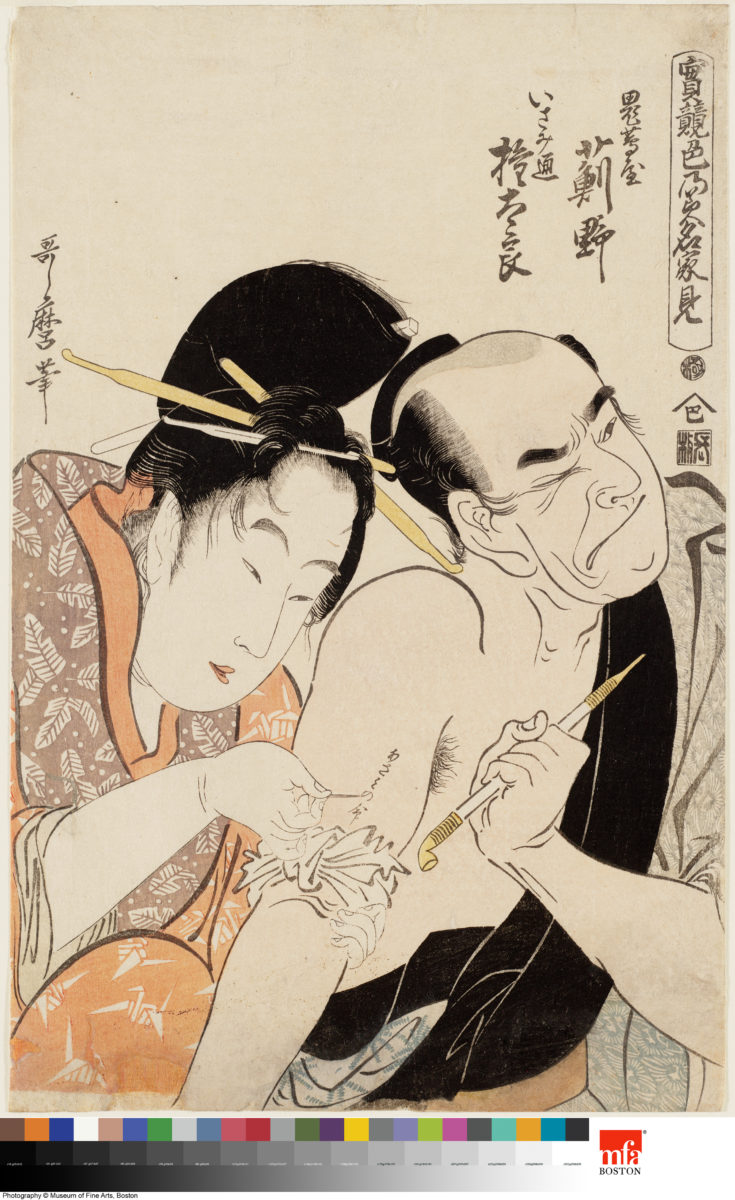A cursory look around at fellow ferry passengers on any given day will reveal that scores of them are rather elaborately “inked” in some fashion or another. What was once the domain of sailors, longshoremen, and old sea dogs has become so common that social scientists reckon that nearly 50 million Americans are sporting some kind of tattoo these days.
The craze is not without precedent, however, as a new exhibition at the Asian Art Museum clearly demonstrates.
Tattoos in Japanese Prints, which opens on May 31 and runs through August 18, focuses on Edo (modern Tokyo) when it was center for cutting-edge art in the 19th century.
With more than 60 superb works from the Museum of Fine Arts, Boston collection, Tattoos in Japanese Prints uncovers the complex interplay between ink on paper and ink on skin, revealing the origin of some of the most world’s enduring and popular tattoo motifs. The exhibition traces these designs to a famous set of prints by artist Utagawa Kuniyoshi (1797–1861), a series which was itself inspired by a popular 14th-century Chinese martial-arts novel.
“By putting the aesthetic genius of Japanese printmakers on full display, this exhibition underscores how the popular culture of late Edo-period Japan continues to influence how we express ourselves today,” says Jay Xu Asian Art Museum Director and CEO. “We’re excited to share such eye-catching prints with every kind of visitor: from collectors and connoisseurs familiar with the technical virtuosity of these artworks, to audiences who want to understand more about the surprising history of their own personal ink.”
While searching for new subjects for his prints, Kuniyoshi hit upon the idea of a print series focused on hero-bandits from the famed “Water Margin” tale, which was first translated from Chinese and published in Japan between 1757 and 1790. Kuniyoshi called his series, published in the late 1820s, One Hundred and Eight Heroes of the Popular Water Margin. Significantly for the history of tattoo art, Kuniyoshi gave many of the heroes elaborate tattoos, even if the original text did not mention any inked embellishment on their bodies.
“Tattoos in Japanese Prints lets museum visitors see how creative ideas flowed from popular art into urban life, and back again,” says Laura Allen, Asian Art Museum chief curator and curator of Japanese art. “Scholars are uncertain whether Kuniyoshi’s series kicked off the 40-year tattoo boom that followed, or if a nascent fad for body art prompted Kuniyoshi’s artwork, but the ample prints we have from this period by Kuniyoshi and others, who freely imagined elaborate tattoos, probably both inspired and reflected the real-life trend.”

